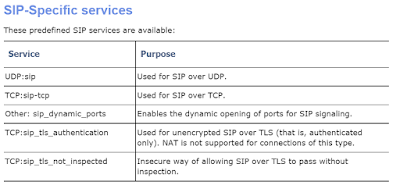Communicator ports used for communication
This section describes the minimum media port allocation requirements for the client and server.
The default UDP/TCP port range used by the Office Communicator 2007 client is 1024-65535. The Real Time Media Communications stack in Office Communicator 2007 allocates the media port dynamically in this range. In order to maintain an adequate level of performance, you can specify a smaller port range for Office Communications Server to use.
To control the specific range of ports that need to be open on a firewall, a registry key setting is provided to force the media stack to reduce the range of port values that can be used for real time media communications. On the Office Communicator client, the port range registry settings are as follows:
- HKLM\Software\Policies\Microsoft\Communicator\PortRange\Enabled
- HKLM\Software\Policies\Microsoft\Communicator\PortRange\MaxMediaPort
- HKLM\Software\Policies\Microsoft\Communicator\PortRange\MinMediaPort
For a Live Meeting client that is in Attendee mode, the port range registry settings are as follows:
- HKEY_CURRENT_USER\Software\Microsoft\Live Meeting\Console\Version 8.0\Attendee\MediaPortRangeMin
- HKEY_CURRENT_USER\Software\Microsoft\Live Meeting\Console\Version 8.0\Attendee\MediaPortRangeMax
For a Live Meeting client that is in Presenter mode, the port range registry settings are as follows:
- HKEY_CURRENT_USER\Software\Microsoft\Live Meeting\Console\Version 8.0\Presenter\MediaPortRangeMin
- HKEY_CURRENT_USER\Software\Microsoft\Live Meeting\Console\Version 8.0\Presenter\MediaPortRangeMax
By default none of these registry keys is set. Values must be configured for both the Attendee and Presenter Live Meeting clients in order for the settings to take effect.
If you use the port range registry key settings to reduce the ports that can be used for media, it is recommended that you do so according to the minimums described in this section.
For client endpoints, the port range should not be reduced to the point where it can compromise the ability of the media stack to negotiate audio and video communication ports during session setup or during a call. More specifically, for an Office Communicator 2007 client or a Live Meeting 2007 client, theminimum port range is 20. A smaller range of ports can result in errors during call transfer and conference escalation scenarios.
Configuring a minimum of 20 ports will enable the client to evaluate the candidate transport addresses that it can use to stream audio and video (including panoramic video) to another client, as described in the IETF Interactive Connectivity Establishment (ICE) protocol. Candidate addresses include a local address and an address on the A/V Access Edge server. A minimum of 20 ports in the port range will also accommodate any escalations from a peer-to-peer call to a conference. (An escalation of a peer-to-peer call to a conference triggers a temporary doubling of the ports in use.)
Different call scenarios can dictate either UDP or TCP-based deliveries. However, whenever UDP can be used to deliver media, it will be used instead of TCP.
| |
|---|
| SRTP and SRTCP streams are multiplexed over TCP but are delivered separately in the case of UDP. UDP connections are more resilient to packet loss than TCP. When a UDP packet is lost, there is no transport impact to subsequent packets. When packet loss occurs over TCP, all subsequent packets are held at the transport level to ensure a reliable stream of data. As a result, overall latency in the media delivery chain may increase over TCP.
|
The minimum number of ports that must be allocated on a client platform is 20. During a typical call, the number of ports used will not exceed 2, 4, or 6 depending on whether audio, audio/video, or audio/video/panoramic video are streamed.
If your organization has a need to establish port ranges on the server, you can use the following WMI settings to configure the port range:
- MSFT_SIPAVMCUSetting
- MSFT_SIPDataMCUSetting
- MSFT_SIPMediationServerConfigSetting
For an A/V Conferencing Server, the port range must be at least six times the maximum number of concurrent call legs that can be supported on the server (two ports for the RTP and RTCP traffic for each modality – audio, video, and panoramic video).
For an A/V Access Edge server, the port range must be at least six times the maximum number of outside user calls that can be supported on the server (two ports for the RTP and RTCP traffic for each modality – audio, video and panoramic video.
For a Mediation Server, the port range must be at least four times the maximum number of concurrent calls that can be supported on the server (two ports for the RTP and RTCP traffic for audio multiplied by two because the Mediation Server is a back-to-back User Agent).
Above from: http://technet.microsoft.com/en-us/library/bb964029.aspx



Comments
Post a Comment